
No. 30 Squadron is a squadron of the Royal Australian Air Force (RAAF). Raised in 1942 as a long-range fighter unit, the squadron saw action in the Second World War, serving in the South West Pacific Area against the Japanese and operating mainly in the ground attack and anti-shipping roles from bases in New Guinea and the Netherlands East Indies. After the war, the squadron was disbanded, however, it was re-raised a short time later as a unit of the part-time Citizen Air Force, operating in the target towing and air defence role in New South Wales. In 1960s the squadron ceased flying aircraft and operated surface-to-air missiles, providing for the defence of Sydney and Darwin before disbanding in 1968. The squadron was re-raised again in 2010 and since then it has served as an airbase support squadron located at RAAF Base East Sale.
No. 6 Squadron is a Royal Australian Air Force (RAAF) training and bomber squadron. It was formed in 1917 and served as a training unit based in England during World War I. The squadron was disbanded in 1919 but re-formed at the start of 1939. It subsequently saw combat as a light bomber and maritime patrol squadron during World War II, and took part in the New Guinea Campaign and New Britain Campaign before being disbanded after the war.
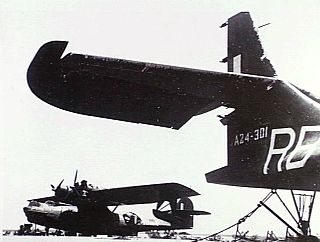
No. 42 Squadron was a Royal Australian Air Force (RAAF) mine laying and maritime patrol squadron of World War II formed in June 1944. It conducted patrol and mine-laying operations over the Netherlands East Indies (NEI) from August 1944 until the war ended a year later. It also conducted operations in the waters off southern China in early 1945. Following the Japanese surrender, the squadron performed transport and reconnaissance flights until it was disbanded in November 1945.

No. 43 Squadron was a Royal Australian Air Force (RAAF) maritime patrol and mine-laying squadron that operated during World War II. Raised in early 1943, the squadron flew Catalina aircraft from bases in Queensland and the Northern Territory, flying mine-laying, convoy-protection and bombing sorties against Japanese targets in the Pacific theatre. These operations saw it operate as far north as the Chinese coast. After the conclusion of hostilities, the squadron was disbanded in mid-1946.

No. 14 Squadron was a Royal Australian Air Force maritime patrol squadron of World War II. It was formed in 1939 and was based in Western Australia throughout the war. While it conducted many patrols over the waters off Western Australia, it did not see combat. The squadron was disbanded in December 1945.

No. 12 Squadron was a Royal Australian Air Force (RAAF) general purpose, bomber and transport squadron. The squadron was formed in 1939 and saw combat in the South West Pacific theatre of World War II. From 1941 to 1943, it mainly conducted maritime patrols off northern Australia. The squadron was based at Merauke in western New Guinea from November 1943 to July 1944, when it was withdrawn from operations. After being re-equipped, it operated as a heavy bomber unit from February 1945 until the end of the war. The squadron continued in this role until it was redesignated No. 1 Squadron RAAF in February 1948. The squadron was reformed in 1973 to operate transport helicopters but was again disbanded in 1989.

No. 66 Squadron was a Royal Australian Air Force (RAAF) maritime patrol squadron of World War II. It was formed in May 1943 as an emergency measure and disbanded in January 1944.

No. 67 Squadron was a Royal Australian Air Force (RAAF) maritime patrol squadron of World War II. It was formed in January 1943, conducted patrols off the southern Australian coastline until the end of the war, and was disbanded in November 1945.

No. 20 Squadron is a Royal Australian Air Force (RAAF) support squadron. Coming under the control of No. 96 Wing, it is responsible for the management of the airfield at RAAF Base Woomera, South Australia. The squadron originated as a maritime patrol unit during World War II. Raised in August 1941, it operated PBY Catalina and Short Empire flying boats from bases in New Guinea, Queensland and the Northern Territory, conducting search-and-rescue, mine-laying, anti-submarine and bombing missions against Japanese targets in the Pacific theatre. Following the conclusion of hostilities, the squadron was disbanded in March 1946. It was reactivated as an airfield support squadron in April 2015.

No. 15 Squadron was a Royal Australian Air Force (RAAF) light bomber and maritime patrol squadron of World War II. The squadron was formed in January 1944 and initially flew anti-submarine patrols off the east coast of Australia. From September that year elements of the squadron took part in the New Guinea Campaign, and the main body of the squadron moved to New Guinea in March 1945. Its duties in New Guinea included anti-submarine and anti-barge patrols as well as attacking Japanese positions. No. 15 Squadron was demobilised after the end of the war, and was formally disbanded in March 1946.

No. 100 Squadron is a Royal Australian Air Force (RAAF) historic aircraft display squadron. It was originally formed as a bomber and maritime patrol squadron that operated during World War II. Raised in early 1942 from the remnants of a British unit that had been destroyed in Malaya, the squadron flew Bristol Beauforts from bases in Queensland and New Guinea, undertaking torpedo- and level-bombing sorties against Japanese targets in the Pacific theatre. Following the conclusion of hostilities, the squadron was disbanded in August 1946. It was reformed as the Air Force Heritage Squadron in January 2021 to operate airworthy warbirds.
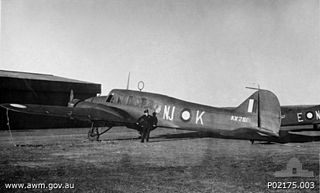
No. 73 Squadron was a Royal Australian Air Force (RAAF) maritime patrol squadron of World War II. It was formed in July 1942 and conducted patrols off the east coast of Australia until July 1944. The squadron was disbanded in September 1944.

No. 80 Squadron was a Royal Australian Air Force (RAAF) fighter squadron that operated during World War II. The squadron was formed in September 1943 and was disbanded in July 1946 after seeing action in the South West Pacific Theatre of the war.
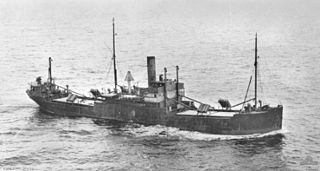
SS Fingal was a Norwegian merchant ship of 2,137 tons which was sunk during World War II off the coast of Australia.

Convoy GP55 was a convoy of Allied ships that travelled from Sydney to Brisbane in June 1943 during World War II. It comprised ten cargo ships, three landing ships, tank (LSTs) and an escort of five corvettes. The Japanese submarine I-174 attacked the convoy on 16 June, sinking the United States Army transport ship Portmar and damaging USS LST-469. Two of the corvettes counter-attacked I-174, but only lightly damaged her.
I-74, later I-174, was an Imperial Japanese Navy Kaidai type cruiser submarine of the KD6B sub-class commissioned in 1938. During World War II, she took part in the attack on Pearl Harbor, the Battle of Midway, the Guadalcanal campaign, the New Guinea campaign, and the Gilbert and Marshall Islands campaign and operated off Australia before she was sunk during her ninth war patrol in 1944.
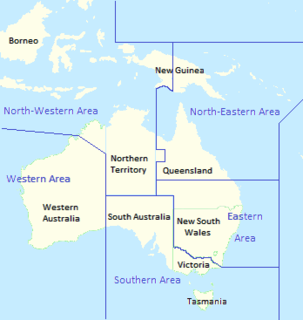
Eastern Area Command was one of several geographically based commands raised by the Royal Australian Air Force (RAAF) during World War II. It was formed in May 1942, and controlled units located in New South Wales and southern Queensland. Headquartered in Sydney, Eastern Area Command's responsibilities included air defence, aerial reconnaissance and protection of the sea lanes within its boundaries. Its flying units operated fighters, reconnaissance bombers, and dive bombers, and concentrated on convoy escort, maritime patrol and anti-submarine warfare. The size of the area was such that the RAAF twice considered splitting it, but nothing came of this.

No. 8 Service Flying Training School was a flying training school of the Royal Australian Air Force (RAAF) that operated during World War II. It was formed in December 1941, and graduated its first course in March 1942. Responsible for intermediate and advanced instruction of pilots under the Empire Air Training Scheme (EATS), the school was based at RAAF Station Bundaberg, Queensland, and operated Avro Anson aircraft. It spawned two maritime patrol squadrons in early 1943, raised in response to increased Japanese submarine activity off Australia's east coast. Some of the school's aircraft were also attached to the Australian Army in 1944–45. No. 8 SFTS completed its final training course in December 1944, and was disbanded in July 1945.

Western Area Command was one of several geographically based commands raised by the Royal Australian Air Force (RAAF) during World War II. It was formed in January 1941, and controlled RAAF units located in Western Australia. Headquartered in Perth, Western Area Command was responsible for air defence, aerial reconnaissance and protection of the sea lanes within its boundaries. Its aircraft conducted anti-submarine operations throughout the war, and attacked targets in the Dutch East Indies during the Borneo campaign in 1945.
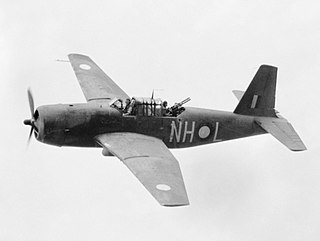
The Royal Australian Air Force (RAAF) operated Vultee Vengeance dive bombers during World War II. The Australian Government ordered 297 of the type in late 1941 as part of efforts to expand the RAAF. This order was later increased to 400 aircraft. A few Vengeances arrived in Australia during 1942, and large-scale deliveries commenced in early 1943; further orders were cancelled in 1944 after 342 had been delivered.


















